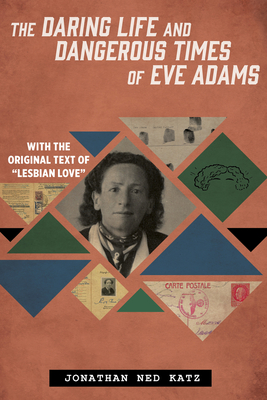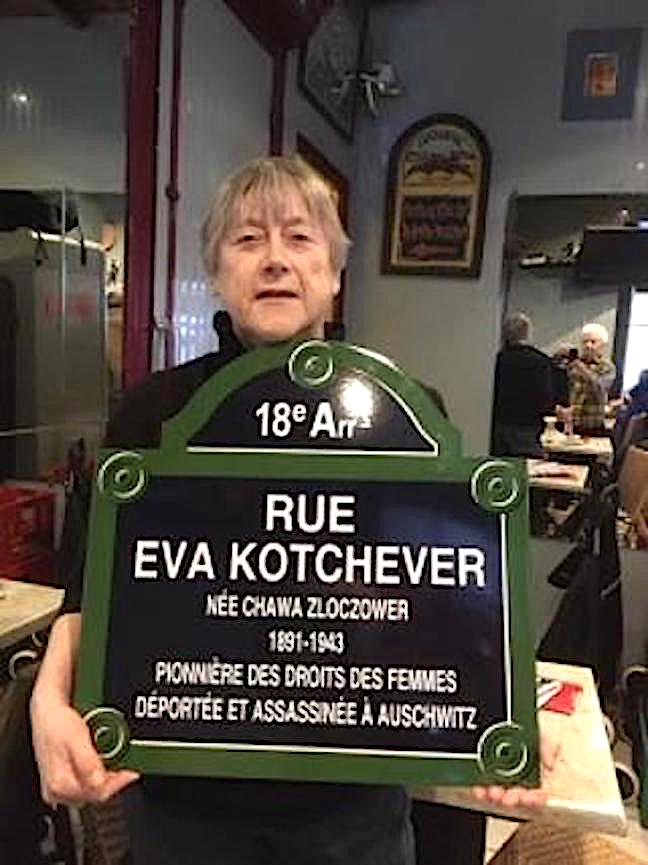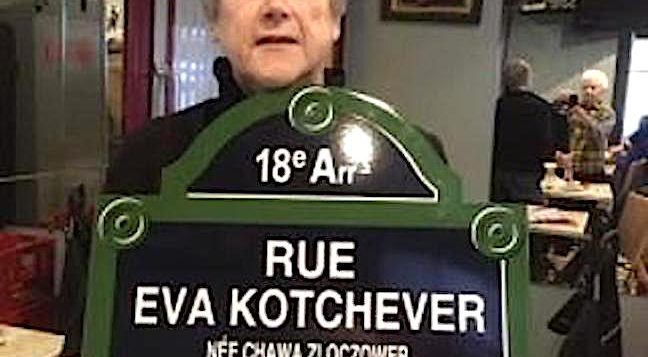 THE DARING LIFE AND DANGEROUS TIMES OF EVE ADAMS
THE DARING LIFE AND DANGEROUS TIMES OF EVE ADAMS
by Jonathan Ned Katz
Chicago Review Press
240 pages, $30.
WHY DOES Eve Adams, born Chava Zloczewer, in Mlawa, Russian Poland, in 1891, matter to us today? The answers to this and a host of other mysteries can be found in Jonathan Ned Katz’ new biography, The Daring Life and Dangerous Times of Eve Adams.
Adams probably would not have come to our attention had she not emigrated to America in 1912 at the age of twenty. It may be that she recognized her sexual difference and sought self-determination in the “golden land.” As a budding lesbian and a Jew, her move to New York, where she took the name Eve Adams and became involved in the radical political activity of Greenwich Village, is a measure of her aspirations.
What’s harder to explain is how Adams came to write the first known sketches of ordinary working-class lesbian lives. Her privately financed book was a limited edition of 150 copies distributed to friends, sponsors, and sympathetic associates. It was published in February 1925—and later used by the FBI and the U.S. government to justify deporting the young lesbian feminist in 1927 under the Comstock laws. She was framed, tried, and convicted, and she served eighteen months on Blackwell Island. Then, despite a vigorous defense documented by Katz in this biography, Adams was deported to Europe in December 1927.
Katz deserves kudos for having safeguarded Adams’ book, Lesbian Life, for future generations. When he began his research, the only catalogued copy of the scandalous book was at Yale’s Sterling Library, and it had since long disappeared. It wasn’t until he got in touch with playwright Barbara Kahn, who had written three plays about Adams that were performed in the East Village in the early 2010s, that he learned the whereabouts of an extant copy. He contacted the owner, Nina Alvarez, who had discovered a copy in the lobby of her apartment building in Albany in 1998. Katz’ biography wraps his text around Adams’ long-lost book, thus providing an opportunity for future researchers to do more in-depth analysis of her work.
Her collection of short stories is the bedrock for anyone looking for unflinching descriptions of working-class lesbian lives in early 20th-century America. The biography is a patchwork of letters, quotations, history, politics, and intersecting sidebars documenting the spread of Nazism and Hitler’s rise to power.
What happened to Eve Adams once she returned to Europe remains a bit fuzzy. Some details have been fleshed out by the French writer and lesbian feminist activist Suzanne Robichon. Her research has dived headfirst into the deportations and murders of women and lesbians during the Holocaust. This dedication to uncovering the truth about lesbian lives despite the horrors still being unearthed—even as memory of the murders recedes and the last survivors are dying off—is admirable and noteworthy.
In February 1929, Adams found herself cold, hungry, and broke in the free state of Danzig (now Gdansk, Poland). She stayed longer than she wanted, because she needed to secure a Polish passport. She fled to Warsaw and worked as a governess. Her job reminded her of the workhouse where she’d been imprisoned in the U.S. Glumly, she mused about her future. Here she was a stranger in her own country and handicapped as a “Jewess.” She declared: “In Poland, there are two distinct races, Christians and Jews, and they don’t mix.”

Arriving in Paris during the 1930s, she earned a living selling erotic literature to American and English tourists. Her clients included such writers as D. H. Lawrence, Henry Miller, James Joyce, Parker Tyler, Henri Ford, and Anaïs Nin. In 1934, she met a beautiful blonde chanteuse, Hella Olstein Soldner, and her husband. The Jewish threesome settled down into a stable bohemian life.
By June 1940, the Nazis had occupied Paris. People they knew were fleeing or disappearing daily, and others were being interrogated and tortured by the French and German authorities. In December 1943, Adams and Soldner were arrested and sent to Drancy internment camp. Their luck had run out. By December 17th, they were loaded onto a cattle car on their way to Auschwitz-Birkenau, where they perished. At the liberation in 1945, only six of the 32 survivors were women. Eve Adams and Hella Olstein Soldner were not among them.
Today, scholars are still exploring how the confluence of shifting politics, culture, and social trends impacts a Jewish sense of belonging or being in the world. Recently a crack team of dedicated Europeans working with Robichon has put together a blockbuster exhibition at the Shoah Memorial on gay men and lesbians who perished in the Nazi death camps, with a gallery devoted to Eva Kotchever that has been drawing record crowds, despite Covid (June 22, 2021–March 6, 2022). And Robichon has succeeded in having a street in Paris named after Kotchever.
Notwithstanding Katz’ achievements, let me address a couple of troubling claims in this book, beginning with the assertion that there was fierce competition between the salons of Gertrude Stein and Natalie Barney. This claim has been refuted by Suzanne Rodriguez in her book Wild Girls. In addition, the writer declares that Natalie Barney was “pro-Fascist, pro-Nazi,” based on outdated and unsupported evidence. I addressed, and refuted, this accusation based on solid research in my 2015 biography Romaine Brooks: A Life.
That said, Katz has given back to us an extraordinary and courageous lesbian. Chava/Eve/Eva would have remained lost to us, like so many gay forebears, but for his dedication to rediscovering her life and work. Future scholars can now meet the challenge of researching and analyzing her stories of lesbian life in 20th-century America, restoring this previously unknown chapter in our collective heritage.
Cassandra Langer is the author of Romaine Brooks: A Life (2015).






